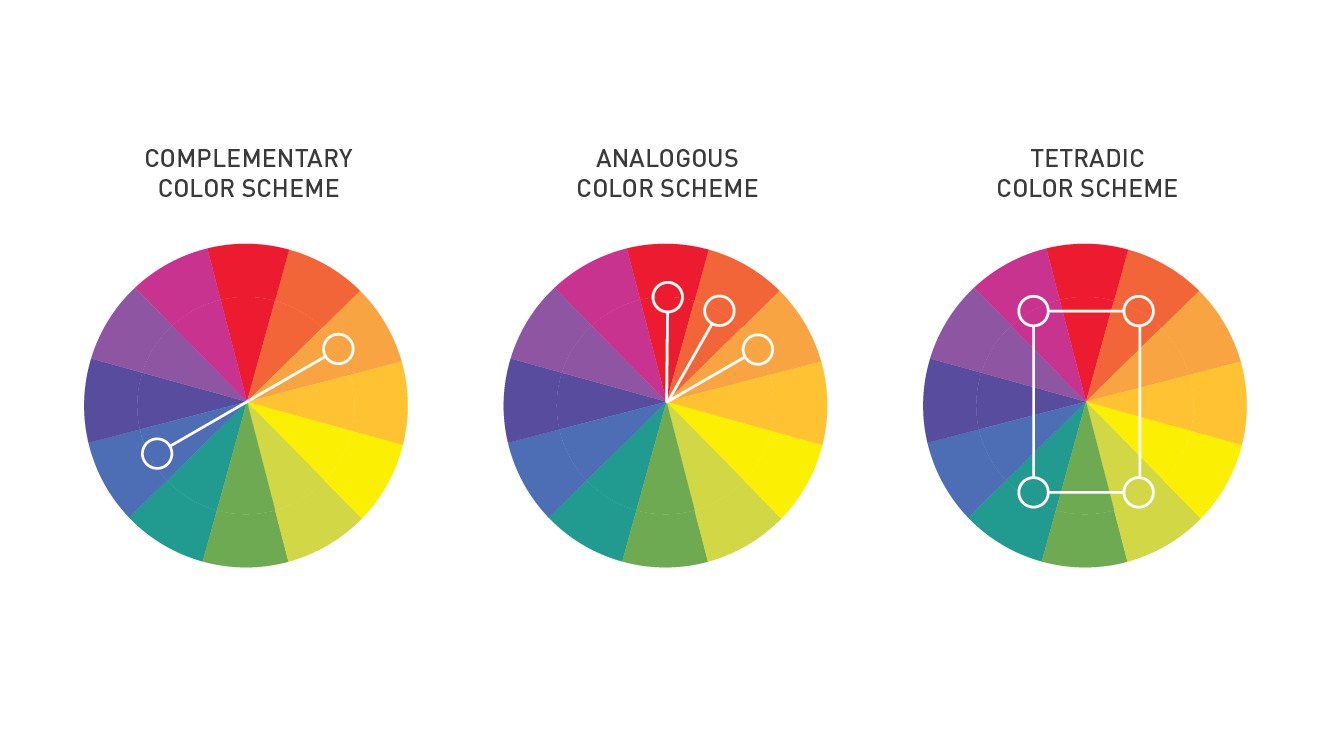Click on the colors below to randomise them. Once you settle on the right color scheme, note down the hex codes and head over to our color code converter to get other color code values.
Color schemes
There is something magical about color schemes in user interfaces. They can make otherwise dull and drab apps or websites very appealing and fun. They can also help reduce visual clutter and improve usability. Choosing the right color scheme is important; but, with good color theory, it can be fun too.
A color scheme is a combination of colors that work well together. The colors in the scheme are generally harmonious (they mix well together) and complementary (they look good next to each other). Color schemes are generally created for a specific project or purpose. Color schemes are usually classified into two basic types: analogous and complementary.

Analogous color schemes
Analogous color schemes are made up of colors that are next to each other on the color wheel. If you draw a line from one color to the next, this creates a triangle. If you alternate colors, you create a harmonious color scheme. An example of an analogous color scheme is seen in the image below.
Analogous color schemes are simple and they work well for a number of different types of projects. One of the main benefits of using an analogous color scheme is that the colors can be quickly and easily chosen from a color wheel.
Complementary color schemes
Complementary colors are colors that are opposite each other on the color wheel. If you draw a line from one of the colors to the other, it creates a straight line. Complementary colors are often used in a number of different ways. One of the most popular is to use complementary colors as a background and text color scheme.
A complementary color scheme can have a very striking effect. This is partly due to the high contrast between the colors, but it can also be due to the fact that complementary colors are naturally harmonious. Complementary color schemes are generally more difficult to pull off than analogous schemes, but they can be very visually appealing.
Analogous and complementary color schemes are not the only color schemes, but they are the most common. Other color schemes include triadic, tetradic, and split complementary schemes.
